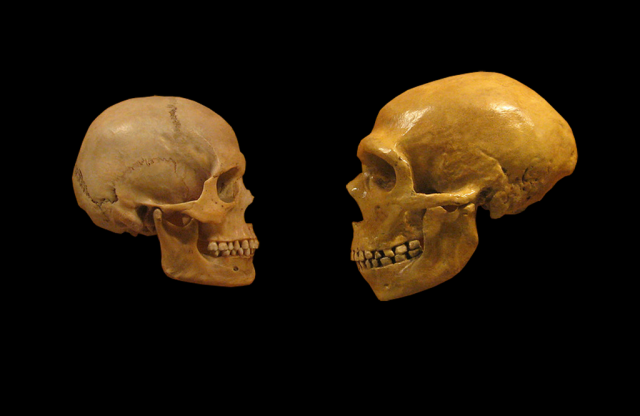Neanderthals were different because their genes were regulated differently

A modern human and Neanderthal skull face off. (credit: hairymuseummatt / DrMikeBaxter / via Wikimedia Commons)
John Capra, a research scientist at Vanderbilt University, wants to know how evolution has shaped our genomes and how differences in genetics can account for differences in species. In his latest work, he tries to get a better sense of what ancient humans-Neanderthals and Denisovans-may have been like. This has been difficult because there is only so much that scientists can glean about biological traits from fossils and DNA. And it's not much.
Capra's new study takes advantage of the fact that Neanderthals interbred with modern humans (yes, Jean Auel was a prescient genius). Collectively, we have about a third of the Neanderthal genome scattered across our cells' nuclei, or at least Eurasian populations do. Most of this Neanderthal DNA is in regions that don't encode proteins, a category that includes gene regulatory regions that dictate where, when, and how much a gene is expressed.
Ancient vs. modernMuch of the Neanderthal DNA that has been retained in the modern genome influences the immune system, hair and skin, and neurological development. But to figure out which genetic regions have divergent regulatory effects in ancient and modern humans, Capra's lab didn't look at the Neanderthal DNA sequences that modern humans got. It looked at the sequences we didn't get.
Read 6 remaining paragraphs | Comments